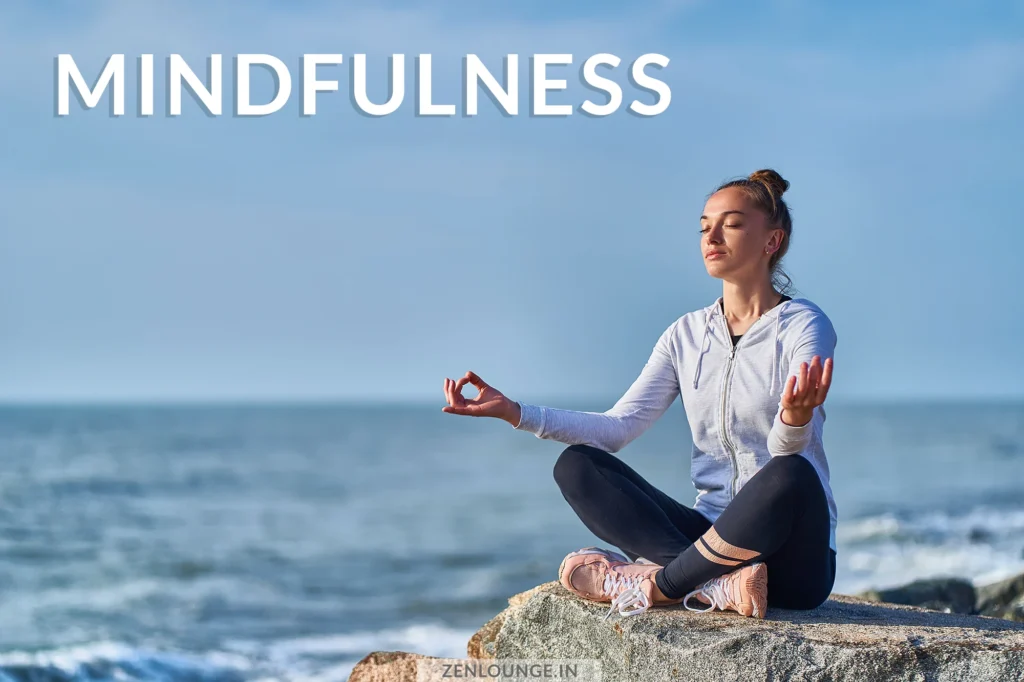Mindfulness and meditation are powerful techniques for achieving inner peace and mental clarity. By practicing mindfulness, individuals can learn to focus their attention on the present moment and cultivate a sense of calm and awareness. Similarly, meditation allows individuals to quiet the mind, reduce stress, and promote emotional well-being. These techniques have been used for centuries to promote overall well-being and are becoming increasingly popular in today’s fast-paced world. Incorporating mindfulness and meditation into daily routines can lead to a more peaceful and balanced life.
Mindfulness: Understanding the Basics
Mindfulness is the practice of being fully present and engaged in the moment, without judgment or distraction. It involves paying close attention to your thoughts, feelings, bodily sensations, and the surrounding environment. By cultivating mindfulness, individuals can develop a greater sense of self-awareness and emotional regulation, leading to a more balanced and peaceful state of mind.
One common technique for developing mindfulness is through mindfulness meditation, where individuals focus their attention on their breath or a specific object, and gently bring their mind back to the present whenever it wanders. Mindfulness can also be incorporated into everyday activities, such as eating, walking, or even washing dishes, by bringing full attention to the experience at hand.
The Benefits of Meditation for Inner Peace
Meditation has been shown to have numerous benefits for mental and emotional well-being, including reducing stress, anxiety, and depression. By practicing meditation regularly, individuals can strengthen their ability to remain calm and centered in the face of life’s challenges, leading to a greater sense of inner peace and resilience.
Furthermore, meditation can improve concentration, enhance self-awareness, and promote a more positive outlook on life. It can also foster a deeper connection with oneself and others, leading to improved relationships and a greater sense of compassion and empathy.
Types of Meditation Practices
There are various types of meditation practices, each with its own unique focus and techniques. Some common forms of meditation include mindfulness meditation, loving-kindness meditation, transcendental meditation, and body scan meditation. Each practice offers a different approach to cultivating inner peace and overall well-being.
For example, mindfulness meditation emphasizes non-judgmental awareness of the present moment, while loving-kindness meditation focuses on cultivating feelings of compassion and goodwill towards oneself and others. Transcendental meditation involves repeating a mantra to achieve a state of deep relaxation and heightened awareness, while body scan meditation involves systematically scanning and releasing tension from different parts of the body.
Practical Tips for Cultivating Inner Peace
Incorporating mindfulness and meditation into daily life can help cultivate inner peace. One practical tip is to set aside a specific time each day for meditation, even if it’s just a few minutes. By establishing a regular practice, individuals can create a sense of routine and consistency, which can contribute to a greater sense of calm and well-being.
Another tip is to integrate mindfulness into daily activities, such as eating, walking, or driving. By bringing full awareness to these activities, individuals can experience a greater sense of presence and connection to the world around them. Additionally, practicing gratitude and self-compassion can help shift the focus from negative thoughts to a more positive and peaceful mindset.
Challenges and Obstacles in Mindfulness and Meditation
While mindfulness and meditation offer numerous benefits, they can also present challenges and obstacles. One common challenge is maintaining consistency and motivation in a meditation practice, especially when faced with a busy or hectic schedule. It can be difficult to carve out time for meditation amidst the demands of daily life.
Furthermore, some individuals may struggle with racing thoughts or an inability to quiet the mind during meditation. It’s important to remember that this is a common experience and that the practice of meditation is not about achieving a perfectly still mind, but rather about observing the thoughts and emotions that arise without judgment. Over time, the ability to maintain focus and calmness during meditation can improve.
Seeking Guidance and Support
For those new to mindfulness and meditation, seeking guidance and support can be beneficial. There are numerous resources available, including books, apps, and online courses, that can provide instruction and guidance for developing a meditation practice. Additionally, joining a meditation group or community can offer support, accountability, and the opportunity to connect with others on a similar path.
It’s important to approach mindfulness and meditation with an open mind and a sense of curiosity, recognizing that the practice is a journey that unfolds over time. Seeking guidance and support can help individuals navigate any challenges or obstacles that arise, and can provide a sense of community and connection along the way.
Integrating Mindfulness and Meditation into Daily Life
Integrating mindfulness and meditation into daily life is key to experiencing the benefits of these practices. One way to do this is to start small by incorporating short meditation sessions into your daily routine, such as taking a few minutes to focus on your breath in the morning or before bed. Over time, you can gradually increase the duration of your meditation sessions as you become more comfortable with the practice.
Additionally, finding ways to bring mindfulness into everyday activities, such as mindful eating or walking, can help cultivate a greater sense of presence and peace throughout the day. It’s important to approach the practice with patience and self-compassion, recognizing that it’s okay to have moments of distraction or difficulty, and that the practice is about coming back to the present moment with kindness and awareness.
Exploring Advanced Meditation Techniques
As individuals become more familiar with meditation, they may choose to explore advanced meditation techniques to deepen their practice and cultivate inner peace. These techniques may include visualization, breathwork, or the use of specific mantras or mudras (hand gestures) to enhance the meditative experience.
Advanced meditation practices can also involve the exploration of deeper states of consciousness, such as accessing a sense of oneness or connection with the universe. These practices require a greater level of commitment and experience, and individuals may benefit from seeking guidance from experienced meditation teachers or practitioners as they explore these more advanced techniques.
| Technique | Description |
|---|---|
| Mindfulness Meditation | Focuses on being intensely aware of what you’re sensing and feeling in the moment, without interpretation or judgment. |
| Loving-Kindness Meditation | Involves cultivating an attitude of love and kindness towards oneself and others. |
| Body Scan Meditation | Involves paying attention to each part of the body in sequence from head to toes. |
| Yoga | Combines physical postures, breathing exercises, and meditation to promote relaxation and reduce stress. |
SONUÇ
Mindfulness and meditation are powerful techniques for achieving inner peace and reducing stress. By practicing mindfulness and different types of meditation, individuals can learn to focus on the present moment, cultivate positive emotions, and promote relaxation of both the body and mind.



